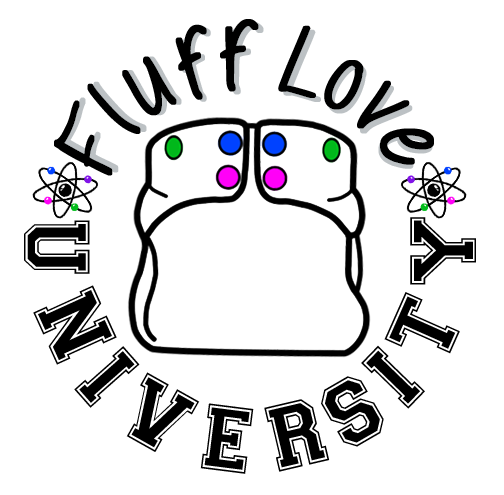Home >> Sourced Science >> What’s In My Detergent?
by Darcy Osheim
There is a lot of concern from parents about chemicals and ingredients we expose our children to, especially when cleaning cloth diapers. This stems from the thought that detergent chemicals are 1) harmful to baby in any type of exposure and 2) they embed themselves into the cloth. We are here to help you understand why these two things do not happen when using a real detergent.
While eating/ swallowing or inhaling laundry products is toxic (please always keep any cleaning product WAY out of the reach of your children), washing fabric with a detergent is how it is designed.
Detergents are made up of:
- Surfactants: molecules that are made up of a head that is hydrophilic (water loving) and a tail that is hydropobic (loves grease and dirt). In the wash, the fecal matter and urine attach to the hydrophobic section of the surfactant and are lifted away with the water by the hydrophilic section. Once they are lifted away with the water, they washed away because they have no receptors left to attach back to fabric.
- Builders: The amount of builders varies depending on your detergent. A builder is much like a booster (Oxyclean, Borax, Calgon) as its job is to soften the water and remove minerals like calcium from binding to the clothes. They allow the Surfactants to bind to fecal matter and urine instead of to the minerals. They are safe for both your diapers and your baby.
- Bleaches: There are many different kinds of bleaches, including sodium hypochlorite (NaClO) or liquid bleach, hydrogen peroxide (H2O2), peracids and bleach activators. A bleach activator such as the popular Tetraacetylethylenediamine (TAED) are needed for hydrogen peroxide to work at temperatures below 104* F or 40* C. These are safe for your diapers and your baby.
- Colorants: These are considered safe in detergent. What is left in the water is treated in a water treatment plant and outside high concentrations is considered safe for aquatic life.
- Optical Brighteners: These are used to make fabrics look whiter by reflecting back more blue light thus reducing the yellow appearance. While for users with very sensitive skin optical brighteners can be an irritant, for most, there is no concern during use.
ADDITIONAL INGREDIENTS:
- Enzymes: Not necessary for detergent, but improves performance. Enzymes are specifically chosen to attach and lift off protein stains. In the case of cloth diapers, the enzyme helps to break down the fecal matter and urine. Since they occur naturally in our environments, they are eco-friendly and will not hurt baby, plants or other animals.
- Fragrance: this varies between brands. Those with extremely sensitive skin should avoid fragrances. Some mainstream companies such as P&G use only biodegradable perfumes/fragrances.
REFERENCES:
- http://www.cleaninginstitute.org/clean_living/soaps__detergents_products__ingredients_2.aspx
- http://www.scienceinthebox.com/enzymes-in-laundry-detergents
- http://www.york.ac.uk/res/sots/activities/soapysci.htm
- http://www.epa.gov/dfe/pubs/laundry/techfact/keychar.htm
- http://www.scienceinthebox.com/glossary
- http://www.princeton.edu/~achaney/tmve/wiki100k/docs/Optical_brightener.html
- http://www.cleaninginstitute.org/clean_living/soaps__detergents_chemistry.aspx
- http://www.algebralab.org/passage/passage.aspx?file=Chemistry_Soaps.xmlhttp://www.britannica.com/EBchecked/topic/550751/soap-and-detergent
